Fashion is more than just a collection of fabrics and trends; it serves as a captivating lens through which we can explore the rich tapestry of our history and culture. From the extravagant garments of royal courts to the minimalist styles of modern streetwear, each piece of clothing carries with it a story—an echo of the societal values, technological advancements, and cultural movements of its time.
In this article, we will delve into the interesting ways fashion intertwines with past events and cultural shifts, revealing how the clothes we wear are often a direct reflection of the world around us. Join us on this journey as we uncover the narratives woven into the seams of style, celebrating the dynamic relationship between fashion and the human experience. Whether you’re a fashion enthusiast, a history buff, or simply curious about the stories behind everyday attire, there’s something here for everyone to enjoy.
Understanding the Historical Roots of Fashion Trends

Fashion trends are deeply intertwined with the historical and cultural zeitgeist of their times. They serve as a visual narrative, reflecting societal values, technological advancements, and collective moods. For instance, the flapper dresses of the 1920s emerged as a bold statement of women’s liberation, symbolizing a shift towards freedom and modernity after the constraints of the Victorian era. Similarly,the rise of post-war utility fashion in the 1940s mirrored the societal need for practicality and resourcefulness during times of scarcity,echoing the resilient spirit of a generation recovering from conflict.
Moreover, fashion often acts as a canvas for cultural dialogues, where influences from diffrent regions and ethnicities meld to create new styles. The hip-hop culture of the 1980s and 1990s is a prime example,blending elements from African American,Latino,and streetwear aesthetics,thus challenging mainstream norms and celebrating diversity.Various cultural touchpoints are crucial in shaping these trends, such as:
- Art movements - Influencing color palettes and silhouettes.
- Political climates – Shaping fashion as a form of protest or statement.
- Technological innovations – Leading to new fabrics and manufacturing methods.
Through the lens of fashion, we can better understand the values and narratives that define each era, showcasing how our attire is a tapestry of experiences, aspirations, and identities.
Exploring Cultural Influences That Shape Style Choices
the interplay between culture and fashion is a dynamic force that influences how we express ourselves through style.Various factors contribute to this relationship,with each era and community leaving its unique imprint on clothing choices. For instance, the historical context of a region can inform trends; traditional garments often echo the stories and values of a people. As cultural celebrations arise,they influence fashion trends,showcasing regional fabrics,patterns,and colors that tell tales of heritage and pride. Furthermore, as ideas and aesthetics travel across borders, they create a rich tapestry of sartorial influences, merging contemporary styles with traditional designs.
additionally, the notion of identity plays a key role in shaping style. Fashion is not just about clothes; it’s about self-expression and belonging. People often turn to cultural symbols to communicate their individuality or connect with their roots. This is evident in various trends,such as:
- Ethnic prints that celebrate indigenous artistry
- Streetwear that draws from urban culture
- Retro styles that revive past movements
Moreover,events such as fashion weeks and exhibitions further highlight the dialogues between different cultures,showcasing how designers interpret cultural narratives through fabric and form. Below is a glimpse into some key cultural influences over the decades:
| Decade | Cultural Influences | Fashion Highlights |
|---|---|---|
| 1920s | flapper Culture | Short hemlines, beading |
| 1960s | Counter-Culture Movement | Psychedelic patterns, bell-bottoms |
| 1980s | Pop and Hip-Hop | Bold colors, oversized silhouettes |
The Role of Fashion in Social Movements and Identity
fashion serves as a powerful vehicle for social movements, often acting as a statement of solidarity and cultural identity. From the suffragette’s white dresses to the vibrant attire of the civil rights movement, clothing has been a means of expressing ideals and rallying communities around shared goals. By wearing certain colors or styles, individuals can visually communicate their beliefs and affiliations, creating a sense of belonging and shared purpose. For example, the pink pussy hats worn during the Women’s March in 2017 became a symbol of resistance against misogyny, embodying the intersection of fashion and activism.
Moreover, fashion not only reflects cultural narratives but also challenges societal norms and expectations. As designers and activists blend aesthetics with advocacy, garments become more than mere fabric.They can be platforms for dialog surrounding issues such as race, gender, and sustainability.Consider the rise of streetwear,which often intersects with urban culture and serves as a canvas for socio-political commentary. The incorporation of elements like graffiti or indigenous patterns can challenge stereotypes and celebrate diversity. This makes fashion a dynamic narrative of history that continues to evolve,signaling changes in societal values and priorities. Here’s a glimpse of how different styles have been intertwined with cultural movements:
| Fashion Style | Cultural Movement | Symbolism |
|---|---|---|
| Flapper dresses | Women’s Suffrage | Liberation & Independence |
| Black Panther Fashion | Civil Rights Movement | Power & Identity |
| LGBTQ+ Pride Attire | LGBTQ+ rights Movement | Visibility & Acceptance |
| Eco-Kind Fabrics | Sustainability Movement | Conscious Living |
Embracing Diverse Narratives: A Guide to Inclusive Fashion Choices
In today’s world, fashion is more than just fabric and trends; it’s a powerful medium that narrates the stories of cultures and histories. When we explore various fashion choices, we uncover the rich tapestry of traditions, beliefs, and values that shape diverse communities. Inclusive fashion allows for a deeper recognition of these narratives by encouraging individuals to embrace styles that reflect their unique backgrounds. Some prominent aspects to consider include:
- Heritage Styles: Clothing that represents cultural landmarks or historical events.
- Traditional Techniques: Techniques like weaving, embroidery, and dyeing that have been passed down through generations.
- Symbolism: Fabrics,colors,and patterns that hold specific meanings in various cultures.
Moreover,fashion can act as a bridge between generations,allowing personal stories to be articulated through attire. By intentionally choosing garments that honor one’s history or that of others, we create spaces of dialogue and respect. To visualize how various elements come together in a fashion narrative, consider the following table illustrating key influences:
| Fashion Element | Influencing Culture | Significance |
|---|---|---|
| Textiles | Indigenous Cultures | connection to nature and their ancestral lands. |
| Patterns | African Tribes | Signifying clan identity and storytelling. |
| Silhouette | Victorian Era | Reflecting social status and gender roles. |
Wrapping Up
As we’ve explored throughout this article, fashion is far more than just fabric and thread; it serves as a vibrant tapestry woven from the threads of history, culture, and societal change. The garments we wear not only express personal style but also embody the collective stories of our past and present. By understanding the intricate relationship between fashion and cultural narratives, we can appreciate how trends are influenced by historical events, artistic movements, and social shifts.
As you navigate your own wardrobe choices, remember that each piece carries with it a legacy, a glimpse into the era it emerged from, and the values it represents. Fashion is a powerful medium of expression, one that can provoke thought, inspire dialogue, and even serve as a catalyst for change.
So the next time you slip into your favorite outfit, take a moment to reflect on the stories it tells and the cultures it connects you to. Fashion is not just about looking good; it’s about engaging with the world around us and celebrating the rich narratives that shape our identities. Thank you for joining us on this journey through time and style—may your fashion choices continue to inspire and reflect the diverse tapestry of the human experience!

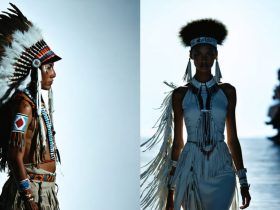
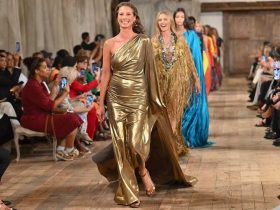

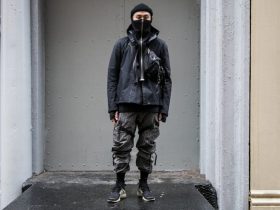
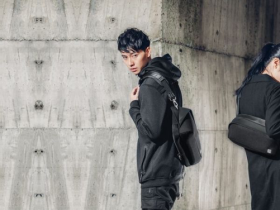



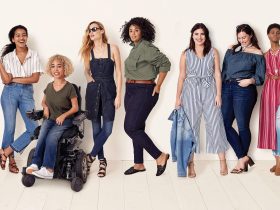
Leave a Reply